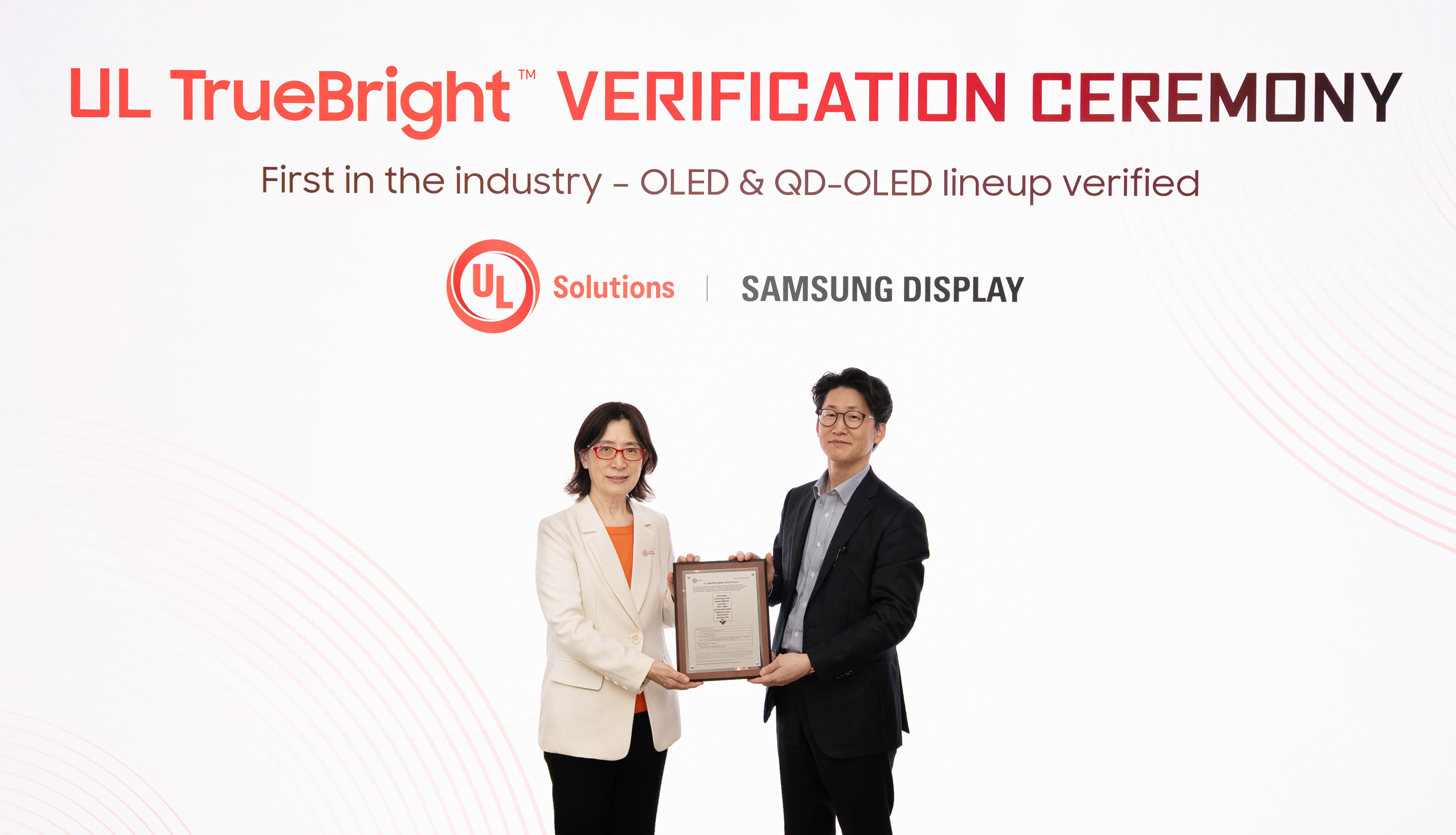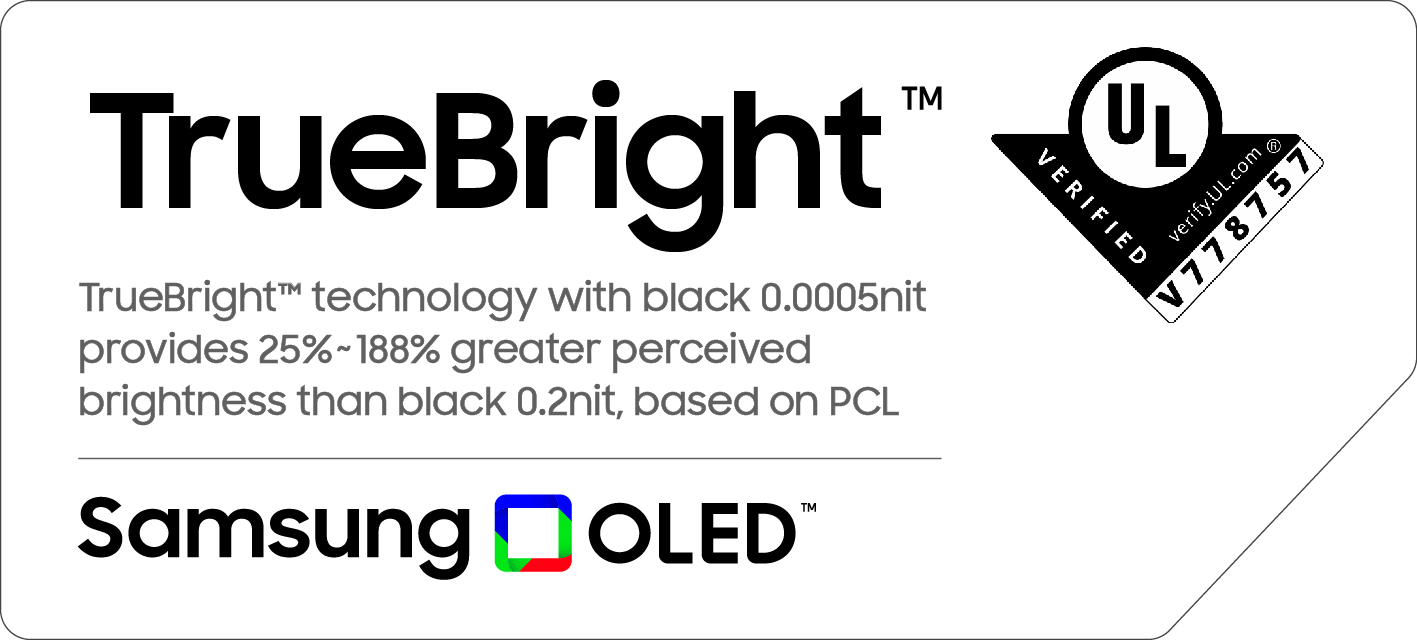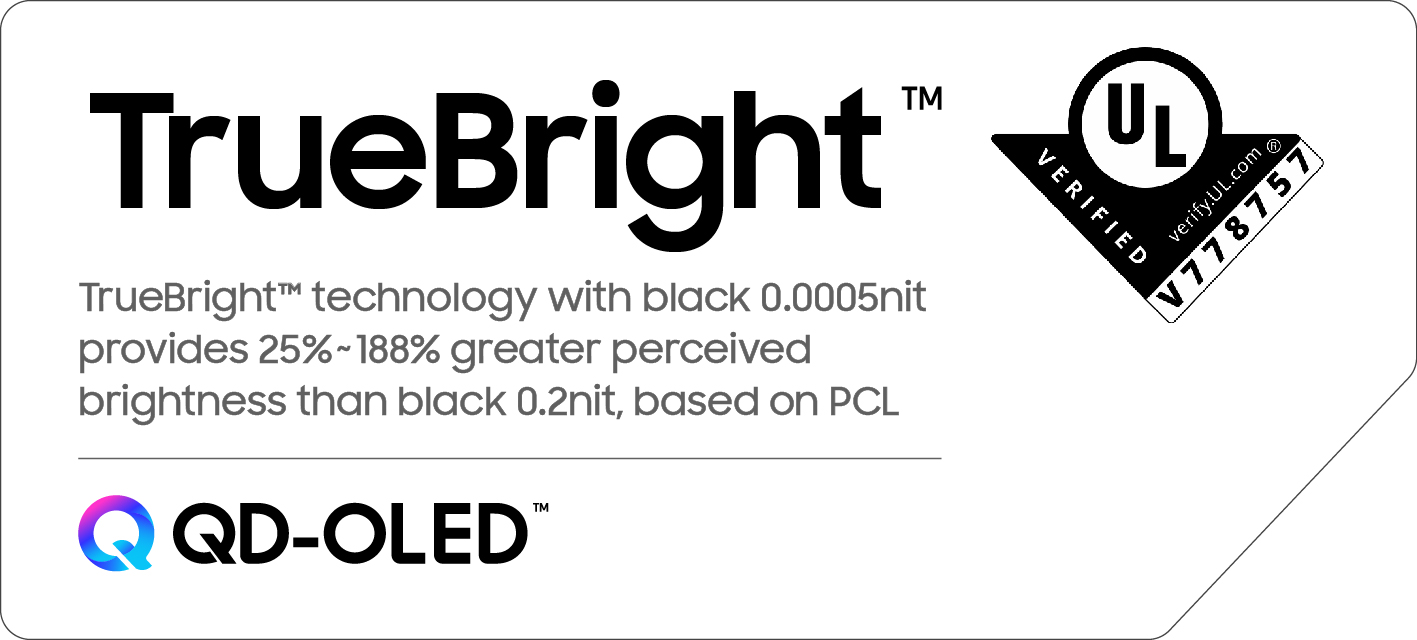- A 300-nit OLED display from Samsung Display demonstrates brightness performance equivalent to a 510-nit LCD, reflecting a Perceptual Contrast Length (PCL) value of 279.37, as assessed by UL Solutions
- The metric takes into account both physical light emissions and contrast ratio, suggesting that images appear brighter as a result
- The company asserts that its IT and automotive lineups offer outstanding value by integrating advanced outside visibility and brightness features
- IT device sophistication is expanding the need for low-power, high-brightness displays, and Samsung OLEDs' outstanding Perceptual Contrast Length provides added value to consumers
SEOUL, April 23, 2025 – Samsung Display today announced that the company has earned Marketing Claim Verification from global safety science company UL Solutions for claims related to perceived brightness. This marks the first time UL Solutions has issued a Marketing Claim Verification for a technology that leverages PCL calculations.
To achieve UL Solutions’ Marketing Claim Verification, Samsung’s True Bright, which is a distinction Samsung gives to displays that provides greater perceived brightness when compared to LCDs of the same PCL score, was evaluated for Perceptual Contrast Length (PCL) to quantify the brightness of the black of a display. PCL, which has been adopted as an industry standard by SEMI1, refers to the brightness of a display specifically as perceived by the human eye. This metric acknowledges that perceived brightness is influenced not only by the physical light emitted by the panel but also by its contrast ratio. OLED displays typically have a contrast ratio of 1,000,000:1 — over a thousand times that of standard LCDs. The enhanced contrast of OLEDs ensures that the same image is perceived as brighter when compared to LCD displays.
UL Solutions evaluated fifteen of Samsung Display’s OLEDs for laptops, tablets, and automobiles, and seven of its QD-OLEDs for monitors and TVs. UL Solutions verified Samsung Display’s claim that its OLEDs and QD-OLEDs provide an average 1.5 times greater perceived brightness than LCDs of the same PCL score. According to assessments by UL Solutions, Samsung Display’s 300-nit OLEDs have the same perceived brightness (279.37) as 510-nit LCDs, and its 500-nit QD-OLEDs have the same perceived brightness (310.9) as 767-nit LCDs.
As the performance of IT devices rapidly advances, it is essential to achieve high brightness with relatively low power consumption. Especially for IT and automotive applications, higher brightness that increases outdoor visibility is very important. Samsung OLEDs deliver greater value to consumers by offering higher perceived brightness than LCDs.
Samsung Display hosted an awards ceremony on April 22 at Samsung Display Research (SDR) in Giheung. The event was attended by Jae-Nam Yun, Executive Vice President and Head of Mobile Display Marketing Team, along with Sherry He, VP and GM of Consumer, Medical & Information Technologies at UL Solutions.
1) SEMI is an industry association representing more than 2,500 semiconductor and display companies globally. It plays a crucial role in reviewing and establishing international standards related to the semiconductor and display industries.





